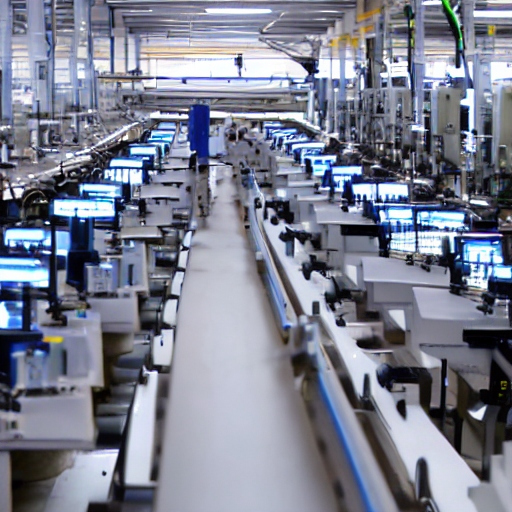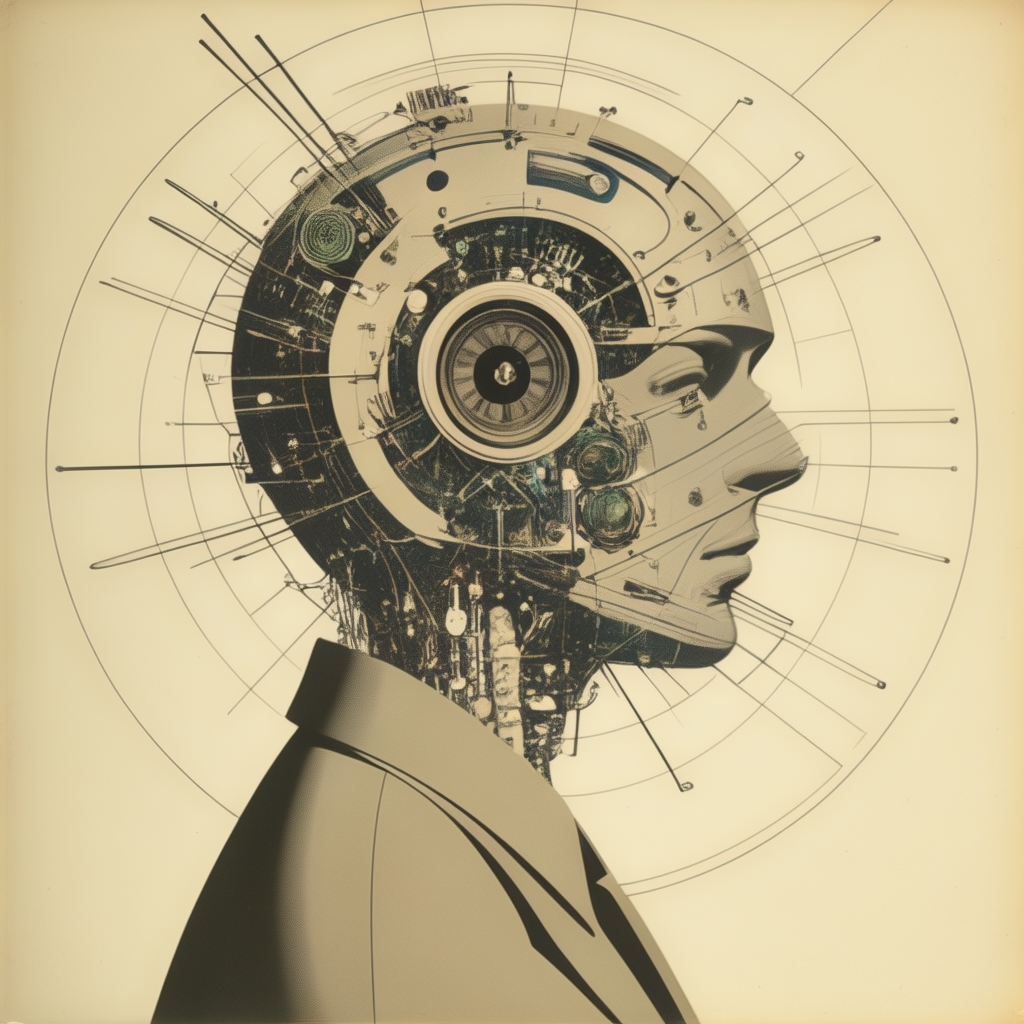Understanding the Human Brain vs. AI: Can We Train Our Brains to Process Sensory Inputs Like AI?
The human brain is one of the most remarkable, complex systems known to science, capable of processing vast amounts of sensory information, from visual and auditory inputs to smell, taste, and touch. It allows us to make decisions, form memories, and take actions almost instantaneously. Yet, when compared to Artificial Intelligence (AI) and Machine Learning (ML) models, it can sometimes feel like the human brain is lagging behind in speed and efficiency.
Many people struggle with processing certain types of information, such as numbers, symbols, or directions, while AI systems can execute these tasks flawlessly at astonishing speeds. This raises a profound question: Can we train our brains to capture and process sensory inputs with the speed and precision of AI systems? Let’s dive into the science behind how the brain processes information and how it compares to AI—and whether we can improve human cognitive abilities through training and awareness.
How the Human Brain Processes Sensory Inputs
Before we understand how AI models are inspired by the brain, let’s break down how the human brain actually processes sensory inputs:
- Sensory Input Collection:
Our brain constantly receives data from the five senses—vision, hearing, touch, taste, and smell—through the nervous system. Among these, vision and hearing dominate our perception of the world. Each of these sensory signals is processed by specialized areas in the brain:- Visual Processing: The eyes capture light, and the visual cortex in the occipital lobe processes this information to recognize shapes, colors, and motion.
- Auditory Processing: Sound waves are captured by the ears, converted to neural signals, and interpreted in the temporal lobe to detect speech, music, and environmental sounds.
- Signal Processing and Interpretation:
Once the brain captures sensory information, it processes the raw data to make sense of it. This involves comparing it to stored knowledge, memories, and patterns we’ve learned over time. For example, recognizing the face of a friend in a crowd or identifying a familiar voice involves a match between sensory inputs and stored memories. - Decision-Making and Action:
After processing the inputs, the brain makes decisions based on context, experience, and emotions. It sends signals to other parts of the body to perform actions, such as moving toward an object, speaking, or reacting to a sound. This occurs subconsciously much of the time, but it happens remarkably fast—within milliseconds. - Subconscious Processing:
The brain is constantly working behind the scenes. A large part of sensory processing happens unconsciously, which is why most people are unaware of the complexity behind their actions. For example, when you catch a ball, your brain processes visual data (the trajectory of the ball), coordinates motor responses, and ensures your muscles act with precise timing—all without you needing to consciously think about it.
How AI and ML Mimic the Brain’s Sensory Processing
Artificial Intelligence and Machine Learning models are largely inspired by the brain’s structure and processing mechanisms:
- Neural Networks: AI systems like deep learning rely on artificial neural networks designed to mimic the brain’s neurons. These networks take in sensory data (such as images or sounds), process the data in layers, and make predictions or decisions based on patterns they’ve been trained on.
- Pattern Recognition: Just like the human brain, AI models excel at recognizing patterns in data. For example, AI can be trained to recognize faces or identify speech with high accuracy by processing large amounts of data and learning from experience. In fact, AI can perform these tasks faster than humans once trained because it’s optimized for specific tasks.
- Speed and Efficiency: One of the areas where AI surpasses the human brain is speed. AI systems can process millions of calculations per second, something the human brain cannot match. For example, AI can analyze thousands of images or voice samples in seconds, while the human brain takes more time to make similar assessments.
Why Are Humans Slower?
While AI is fast, the human brain is more adaptable, but several factors can explain why some people struggle with processing sensory inputs:
- Neural Variability: Every human brain is unique. Some people may struggle with visual or auditory information due to conditions like dyslexia, dyscalculia, or ADHD, which affect how the brain processes certain types of inputs like letters, numbers, or symbols. These people often need more time or alternative strategies to process information.
- Processing Bottlenecks: In certain conditions, the brain faces bottlenecks in how quickly it can process sensory inputs. For example, someone might take longer to navigate through a complex environment or solve math problems due to working memory limitations or cognitive overload.
- Multisensory Integration Issues: Some individuals may have difficulty integrating multiple sensory inputs at once (such as visual and auditory information). This can lead to slower reaction times and a feeling of being overwhelmed by sensory information.
Can We Train Our Brains to Process Information Like AI?
Given these differences, the next question is: Can we train our brains to process information faster and more efficiently, like AI? The answer is yes—but with some caveats.
- Cognitive Training and Neuroplasticity:
The brain is plastic, meaning it can adapt and rewire itself through learning and experience. With the right kind of training, it’s possible to improve certain cognitive abilities:- Attention Training: Exercises that train attention (like mindfulness or concentration exercises) can help people become more aware of sensory inputs and process them more efficiently.
- Working Memory Training: Certain programs and exercises can help improve working memory, which is crucial for processing and holding multiple pieces of information in mind at once. This can help with tasks like navigation, math, and problem-solving.
- Multisensory Integration Training: People can improve their ability to process multiple sensory inputs at once through exercises that train the brain to integrate auditory and visual data more seamlessly.
- Speed vs. Accuracy:
One of the trade-offs the human brain makes is between speed and accuracy. AI systems are optimized for specific tasks, allowing them to be extremely fast. The human brain, on the other hand, is designed for adaptability and generalization, which means it sometimes sacrifices speed for flexibility. While training can improve speed, the brain will likely never match AI’s raw processing power because it is designed for a different set of tasks. - Learning to Understand Our Own Minds:
Most humans are unaware of how their brains process sensory inputs, leading to actions and decisions that seem automatic or unconscious. By practicing metacognition (thinking about your own thinking), individuals can become more aware of how their brains work, improving decision-making and sensory processing. For example:- Mindfulness practices can help people slow down and notice how their brain processes information in real-time.
- Self-awareness training can enhance decision-making by increasing awareness of unconscious biases and patterns.
- Enhancing Visual and Auditory Processing:
Many people struggle with visual and auditory processing—whether it’s recognizing numbers, letters, or navigating environments. Through targeted training (like brain games, puzzles, or music learning), people can enhance their ability to process these sensory inputs more effectively.For example:- Visual training exercises, such as working with patterns or puzzles, can improve visual recognition and memory.
- Auditory training, such as practicing distinguishing between different sounds or speech patterns, can help improve auditory processing.
How AI Might Help Us Understand and Enhance the Brain
While AI currently processes information faster than the human brain, it also provides a model that may help us understand our own brains better. Advances in neuroscience and AI are converging, offering insights into how the brain works and how we might enhance our cognitive abilities in the future.
For example:
- Neural Interfaces: Companies like Neuralink (founded by Elon Musk) are developing brain-computer interfaces that may one day help us enhance sensory processing, decision-making, and memory recall, blurring the line between human cognition and AI.
- AI as a Cognitive Aid: AI could serve as an assistant to help humans make decisions faster and process complex information more efficiently. Instead of trying to make our brains work like AI, we might leverage AI to augment human cognitive abilities.
The Human Brain and AI: A Deeper Exploration into Cognition, Awareness, and Potential for Future Enhancements
The human brain is a complex system that has evolved over millions of years, shaped by biology, environment, evolution, and genetics. While AI and ML systems are incredibly fast and efficient, the human brain processes information in ways that are fundamentally different, with layers of complexity that far exceed the current capabilities of artificial systems. However, the possibility of narrowing the gap between human cognition and AI performance remains a burning question for scientists, researchers, and technologists.
In this detailed analysis, we’ll delve into the multiple factors that affect human cognitive abilities, from biology and evolution to environmental influences and emotional aspects. We’ll also explore the potential for enhancing human cognitive abilities in the future, both through training and technological advancements.
1. The Evolution of Human Cognition
Human cognition has evolved over millions of years, adapting to the challenges of survival and reproduction. Unlike AI, which is designed for specific tasks, the human brain has evolved to be generalist—able to handle a wide variety of problems and situations.
- Evolutionary Perspective:
The human brain has evolved to process sensory information crucial for survival—such as recognizing threats, identifying food sources, and understanding social cues. This adaptability has allowed humans to thrive in diverse environments, but it also means the brain prioritizes certain types of sensory information (like facial recognition or spatial awareness) over others (such as abstract numbers or symbols). - Cognitive Specialization:
While AI can be trained to excel in highly specialized tasks (e.g., chess, facial recognition), the human brain has evolved to handle ambiguous and uncertain situations with flexible, creative problem-solving. Evolution has led to a brain that balances speed and accuracy with the need for adaptability in an ever-changing world. - Social and Emotional Processing:
Human cognition is not only about logic or problem-solving but also deeply tied to social and emotional intelligence. Emotional processing, empathy, and the ability to read social cues are some of the key areas where human cognition currently surpasses AI. These abilities are critical for human interaction and cooperation, which are essential for survival and thriving in social communities.
2. Genetic Factors and Neurochemistry
Genetics plays a fundamental role in determining cognitive abilities, awareness, and how we process sensory information. Each human’s brain is unique, shaped by genetic factors that affect brain structure, development, and function.
- Genetic Variability:
Cognitive abilities vary widely among individuals, partly due to genetic differences. Genes regulate brain development, the number of neurons, synaptic connections, and the levels of neurotransmitters like dopamine and serotonin, which influence cognition, mood, and awareness. - Neurotransmitters and Cognitive Processing:
Neurotransmitters like dopamine, serotonin, and acetylcholine play critical roles in sensory processing, memory, attention, and learning. For instance, dopamine is linked to motivation and reward-based learning, while acetylcholine is crucial for memory and attention. Genetic differences in neurotransmitter production or receptor function can influence an individual’s cognitive capabilities. - Neuroplasticity:
The brain’s plasticity—its ability to change and adapt in response to experiences—can also be affected by genetics. People with high levels of neuroplasticity may be able to learn new skills more easily or recover from brain injuries more effectively. However, neuroplasticity decreases with age, which may limit the brain’s ability to match AI in terms of speed and efficiency over time.
3. Brain Structure and Function: Individual Differences
Different regions of the brain are specialized for different functions, and individual differences in brain structure can significantly impact how sensory inputs are processed and decisions are made.
- Prefrontal Cortex:
The prefrontal cortex is responsible for executive functions like decision-making, planning, and self-control. Some individuals may have more developed prefrontal regions, leading to better problem-solving abilities and faster decision-making. Others may struggle with these functions, particularly if there is underdevelopment or damage to this area (as seen in certain neurodevelopmental disorders like ADHD). - Parietal and Occipital Lobes:
The parietal lobe is involved in processing sensory information like spatial orientation and navigation, while the occipital lobe handles visual processing. Differences in the development and functionality of these regions can explain why some individuals have difficulties with tasks like recognizing faces, reading maps, or interpreting visual symbols. - Cognitive Deficits:
Some individuals may have deficits in specific brain areas due to conditions like dyslexia, dyspraxia, or traumatic brain injuries. These deficits can hinder the brain’s ability to process certain types of sensory inputs, such as written language or spatial awareness. While AI systems are designed to handle such tasks flawlessly, human brains with these deficits require additional time or compensatory strategies.
4. Environmental and Developmental Factors
While genetics set the foundation for cognitive abilities, environmental factors and upbringing play a significant role in shaping how those abilities develop over time.
- Early Childhood Development:
The brain’s development is most plastic during childhood, and environmental factors such as nutrition, parental involvement, education, and socialization can have lasting effects on cognitive abilities. A stimulating environment with access to learning opportunities can foster greater neuroplasticity and cognitive development. - Education and Learning Environments:
Education systems and learning environments are critical in shaping cognitive abilities. A person exposed to a rich learning environment with challenging cognitive tasks is more likely to develop strong problem-solving and sensory processing skills. By contrast, people in less stimulating environments may struggle with these tasks later in life. - Environmental Stressors:
Chronic stress, malnutrition, and exposure to toxins (such as lead or pollutants) can negatively impact brain development and function. Stress hormones like cortisol can interfere with the brain’s ability to process information and make decisions, leading to cognitive deficits that can last into adulthood.
5. Emotional and Psychological Factors
Emotions and psychological states play a significant role in how the brain processes sensory inputs and makes decisions. The emotional state can affect cognitive performance, memory, and decision-making, all of which AI systems are currently immune to.
- Emotional Regulation:
Emotions like fear, anxiety, and excitement influence how we process information. For example, anxiety can narrow attention, making it harder to focus on multiple tasks or process complex information. Emotional regulation is a skill that can be trained, allowing individuals to improve their cognitive performance under stress. - The Role of Motivation:
Human cognition is deeply tied to motivation. AI systems don’t have emotional states or motivation, but humans need a purpose or incentive to perform well. For instance, when highly motivated, humans can outperform AI in creative and problem-solving tasks that require ingenuity and out-of-the-box thinking.
6. Cognitive Awareness and the Limits of Human Consciousness
Humans are often unaware of how their brains process sensory inputs. Much of the brain’s work happens subconsciously, and this lack of awareness can lead to inefficiencies in decision-making or action-taking.
- Metacognition:
Metacognition refers to the awareness of one’s own thought processes. People who are more metacognitively aware can often improve their decision-making, learning, and problem-solving abilities. Training in metacognitive strategies, such as mindfulness and reflection, can enhance awareness of how one processes sensory inputs and improve cognitive performance. - Unconscious Biases:
The human brain is susceptible to cognitive biases that can distort decision-making. These biases often operate at an unconscious level, leading to decisions that may be irrational or suboptimal. AI, which is trained on data without emotional or unconscious interference, can often make more rational decisions in specific tasks. However, humans can become aware of these biases and learn to mitigate them through education and cognitive training.
7. Age, Brain Development, and Cognitive Decline
Age plays a critical role in cognitive ability. As we age, the brain undergoes structural and functional changes that affect sensory processing, memory, and decision-making.
- Childhood and Adolescence:
In early life, the brain is highly plastic and capable of absorbing new information at an incredible rate. However, the prefrontal cortex, which handles decision-making and impulse control, does not fully develop until the mid-20s. This is why children and teenagers may process sensory inputs quickly but struggle with long-term planning or rational decision-making. - Cognitive Decline:
As we age, the brain’s ability to process information declines due to reduced neuroplasticity and the loss of neurons in certain regions. Cognitive functions like memory, attention, and sensory processing may become slower and less efficient, even in healthy individuals.
8. Enhancing Human Cognition: Can We Match AI?
While AI systems are optimized for speed and efficiency in specific tasks, human cognition is shaped by biological limitations, emotional factors, and the need for flexibility. The question remains: Can we enhance human cognitive abilities to match AI in the future?
- Brain-Computer Interfaces (BCIs):
One promising avenue for enhancing human cognition is brain-computer interfaces (BCIs). Companies like Neuralink are working on technology that would allow humans to directly interface with machines, potentially enhancing memory, sensory processing, and decision-making speed. - Neurostimulation:
Transcranial magnetic stimulation (TMS) and electrical brain stimulation are techniques being researched to enhance cognitive abilities by stimulating specific brain regions. These technologies may offer ways to boost problem-solving abilities, learning, and memory. - Genetic Engineering:
Advances in genetic engineering may allow us to alter brain development and function at a genetic level, potentially enhancing cognitive abilities like memory, attention, and decision-making. However, the ethical implications of such technologies remain a significant barrier. - AI-Augmented Intelligence:
Rather than trying to make humans compete with AI, some researchers propose AI-augmented intelligence—using AI to assist human cognition. In this model, humans and AI work together, with AI handling repetitive or highly complex tasks while humans focus on creativity, problem-solving, and emotional intelligence.
Conclusion: The Future of Human Cognition in an AI World
The human brain, shaped by millions of years of evolution, is a marvel of biological engineering. However, its complexity comes with limitations, many of which are rooted in genetics, environment, brain development, and emotional factors. While AI and ML systems can process vast amounts of data at incredible speeds, they lack the adaptability, emotional intelligence, and creativity that characterize human cognition.
In the future, advances in neurotechnology, brain-computer interfaces, and AI augmentation may allow humans to bridge some of the cognitive gaps between themselves and machines. However, it is unlikely that humans will ever “compete” with AI in the same way that machines excel at certain tasks. Instead, the most promising path forward lies in collaboration—combining the strengths of human intelligence with the computational power of AI to achieve feats neither could accomplish alone.
While the human brain can’t yet match the speed or precision of AI, it is incredibly adaptable and capable of improvement through training and awareness. By enhancing our understanding of how the brain processes sensory inputs, practicing mindfulness, and using targeted cognitive exercises, we can improve our ability to process information faster and more effectively.
However, humans are unlikely to match AI in raw processing speed because the brain prioritizes adaptability, generalization, and creativity over specialized tasks. That said, AI and advances in brain-computer interfaces might one day allow us to enhance our cognitive abilities beyond their natural limits, offering a new frontier in human potential.
In the meantime, we can strive to make our brains more aware, efficient, and resilient—while recognizing that the human brain’s strength lies not just in speed but in its ability to handle ambiguity, creativity, and complex problem-solving in ways that AI cannot (yet).






